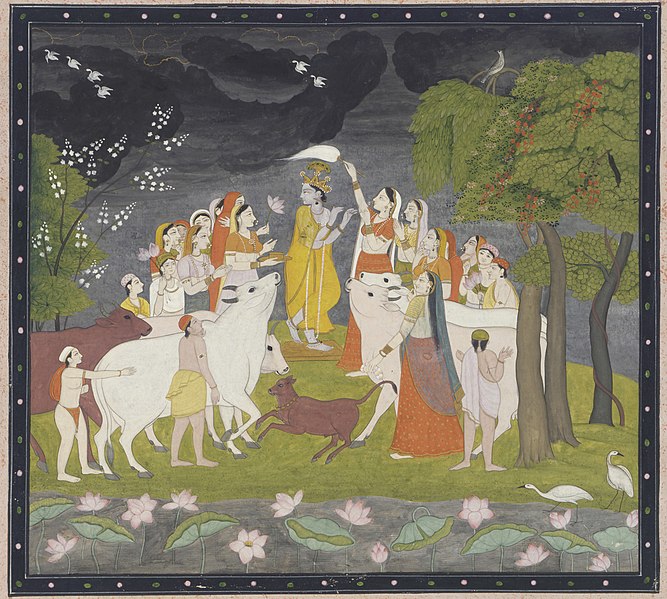Most famous artists (any artist) stick to the mantra of ‘Quality over Quantity’. They call it ‘Slow Mastery’. There are some popular pieces of art and sculpture that took decades to complete. Fine art as they call it. Auguste Rodin’s La Porte de l’Enfer or The Gates of Hell took 37 years to complete. Leonardo Da Vinci worked for decades on his paintings. It took 15 years for James Cameron to make Avatar.
But with the huge (growing) number of artists, poets, musicians and writers we have today, the competition to stay in the audience’s mind by giving them content periodically is more than ever before. Illustrators, bloggers and artists give away free samples of their art by posting them every day/week on their social media handles and blogs. Their growing number of followers is ‘believed’ to be a measure of the success this strategy has brought them. An important marketing tool no doubt.
This tug of war between quantity and quality is now more balanced than ever before. There is an equal number of people to vouch for quantity as much as there are for quality.
But there is this other small group – a group of amateurs mostly, who are starting out from rock bottom, experimenting and finding their niche. This group here does not care about quantity and not so much about quality either. They do it for the mere joy of it. They are often in the backseat with only a small group of friends and family as followers/admirers. Without the pressure to stay ahead in the race, these guys focus on what they enjoy doing. They often take long breaks, sometimes scrap the whole thing and try something new altogether.
But what is the price they pay for it?
Their work is not considered real
Today the measure of a person’s success is in numbers. How much money did he make by selling his painting? How many copies of her book did she sell? How many awards did they win? How many followers do they have? Without these numbers, the art/artist is considered nothing more than a hobby/hobbyist.
When I self-published my first short story, Serendipity, everyone wanted to know how many copies I had sold and how much money I had made. When I told them the numbers (a small number. Self-publishing is hard) they often dismissed it with a wave of the hand. Two years later, when Shikhandini was published by a real publisher, 2000 copies printed and sold, 4 major newspaper articles about it, I was finally taken seriously as a writer.
So, today it is not the art that represents the artist but the numbers that follow.
They are easily forgotten
Artists who create art for the mere joy of it are often lethargic. Their second piece comes out years after the first one if it ever does. Sometimes they switch to a different domain, exploring new horizons. Audiences then assume that the artist is not serious about his/her art. Did you know there are very few successful multi-genre authors in the world? Almost none in India. A romance novelist is expected to keep writing about love, relationships and life for the rest of his/her career. It is not accepted well if he/she chooses to write a recipe book or a murder mystery somewhere down the path.
Such artists are not taken seriously and are forgotten over a period of time. There are many authors today who chose a different pen name for different genres they write in to escape this fate.
They are forced to quit
This is kind of a given. When you or your art are not taken seriously and the small number of audience you have, start forgetting you, you start questioning your talent. If not you, there will be an ample number of friends and family passing ‘well-intended’ comments on reconsidering your passion. For every one successful artist today there are hundreds of equally talented artists who gave up too soon thanks to the falling numbers.
Today, if you happen to visit the lesser-known, remote villages of India, you would be surprised at the number of fine artists – musicians, dancers, painters and writers that you will find there. These men and women spend their leisure time working on their art often confined to their homes or temples. It is not a rare sight to see an old man/woman singing/playing a musical instrument alone on the verandah of his/her house or temple.

19th-century art from Kangra. Artist – Unknown.
The Featured Image of this post is a 19th-century painting from Kangra, a town in the Himalayan foothills. The artist is unknown. Kangra miniaturists seldom sign their paintings. In this era where copyright breach and plagiarism is a serious offence, imagine artists creating such beautiful pieces and deciding not to leave their signatures behind.
These artists do not care about popularity. They certainly do not do it for money. They have learnt the art of doing something for the joy of it and I wonder if that is the reason their art is so untouched, pure and relieving.
Enjoyed reading this blog? Hit the like button before you leave.
If you wish to read my future posts from your inbox, subscribe by entering your email id on the right (desktop) or below (Phone). Don’t forget to leave a comment. (Remember, writers need readers :))
Love,
Ashwini
You can connect with me on:
- Instagram: ashwinishenoym
- Facebook: AuthorAshwiniShenoy
You can buy my books here:



